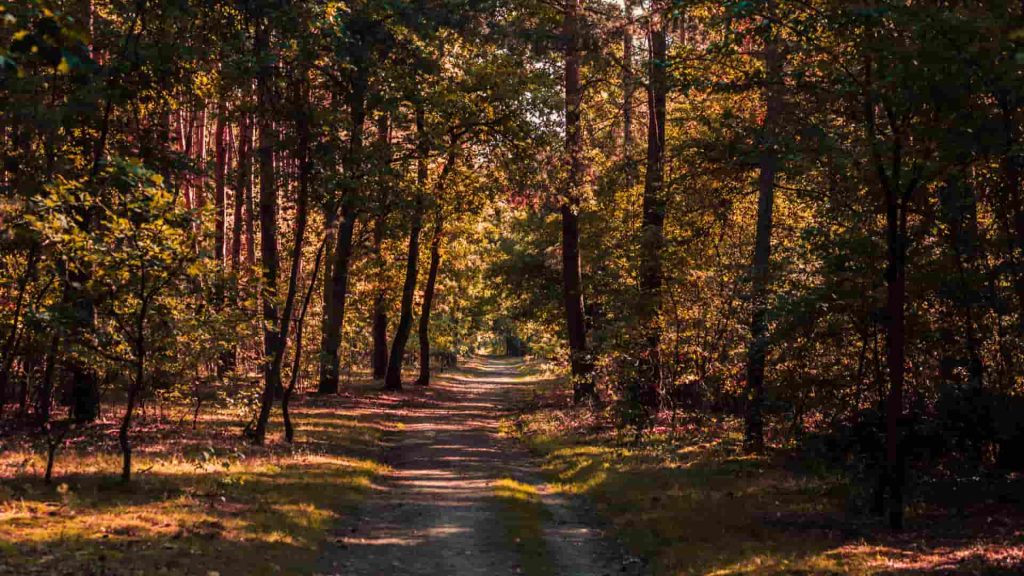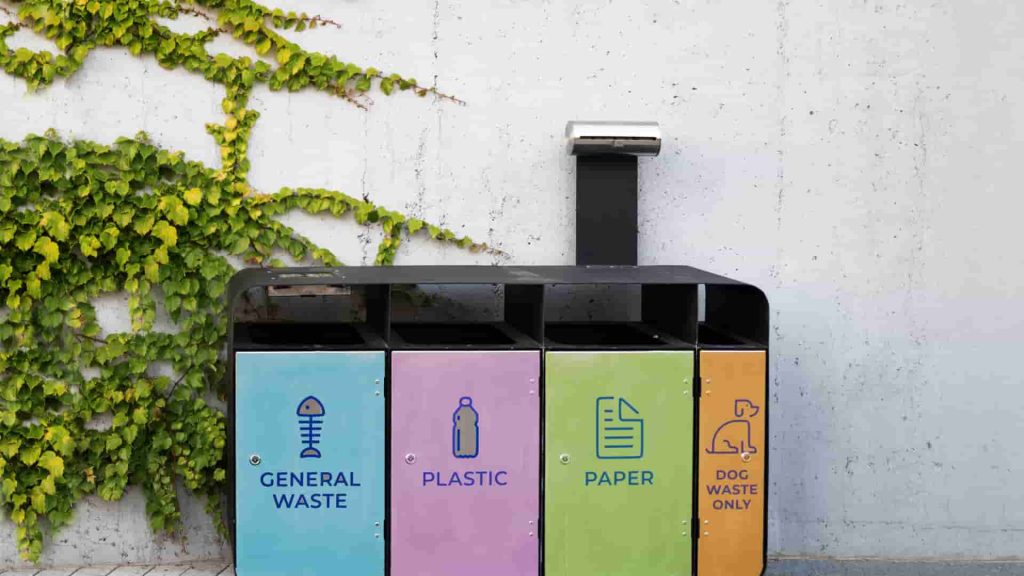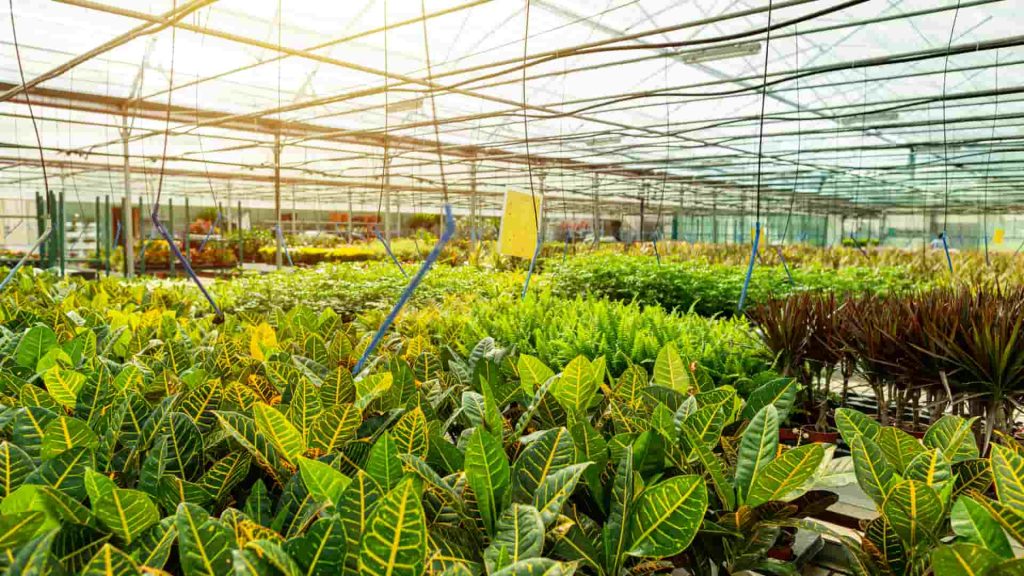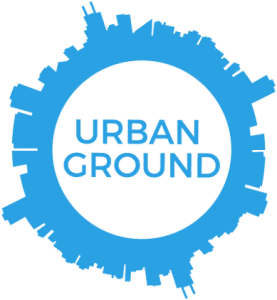
Did you know that 30% of Berlin is a lush, green oasis? Imagine if Berlin were a pizza – 3 out of every 10 slices would be verdant parks and forests, making it one of Europe’s greenest capitals!
And when it comes to cycling, Berliners are in a league of their own, pedaling an impressive 1,000 kilometers each year. That’s like a two-wheeled adventure from Berlin to Rome and back!
But it’s not just about bikes; the city’s public transport is a marvel too, with over 170 U-Bahn and 160 S-Bahn stations, ensuring trains are just minutes away during rush hours.
Caught your attention, did we not?
Essentially, this is the point we are trying to make. Berlin is one of the greenest cities in the world and a lot of thought has gone into urban and city planning to maintain it that way. This isn’t just a city; it’s a living, breathing testament to eco-friendliness. But Berlin’s commitment to sustainability doesn’t stop at green spaces or biking practices (although it is mostly known for these two)!
Let’s take a closer look at how Berlin seamlessly blends urban living with nature and sustainable practices and get inspired by its innovative approach to eco-friendly living.
So, ready for the ride?
Top 5 Ways in Which Berlin Practices Sustainability and Eco-Friendly Living
Berlin is truly a sustainable dream, with its various small but significant steps towards encouraging eco-friendly living practices. We have elucidated a few of them below:
#1 Extensive Network of Parks and Forests
Berlin is not just the cultural capital of Germany, but it is also a green haven, boasting over 2,500 parks and gardens. These verdant spaces account for nearly 30% of the city’s area, serving not just as aesthetic landmarks but as crucial elements in promoting environmental and social well-being.
Make sure to read: Thriving in a New Career Abroad: My Story of Working in Germany
The Role of Green Spaces in Berlin:
- Air Purification: The extensive greenery in Berlin plays a vital role in purifying the air. Trees and plants absorb carbon dioxide and pollutants, releasing clean oxygen, and thus significantly improving air quality.
- Biodiversity: These parks are more than just scenic spots; they are biodiversity hotspots. They provide a habitat for a wide array of flora and fauna, contributing to the ecological health of the city.
- Community Engagement: Beyond environmental benefits, these green spaces are central to community life in Berlin. They offer residents a place to relax, exercise, and socialize, fostering a strong sense of community and well-being.

Prominent Parks You Should Not Miss Out On
| Name of the Park | Unique Features to Look Out For |
| Tempelhofer Feld | Once an airport, this expansive park is a prime example of urban repurposing.It offers vast open spaces for activities like kite-surfing, picnicking, and urban gardening. |
| Tiergarten | Berlin’s most famous park, akin to Central Park in New York.It’s home to historical monuments, a boating lake, and beautifully landscaped gardens. |
| Botanischer Garten | One of the largest and most diverse botanical gardens in the world.Features plant species from different climates and regions, offering an educational as well as a recreational experience. |
Make sure to read: Thriving in a New Career Abroad: My Story of Working in Germany
#2 Biking in Berlin is More than Just Transportation, It is Cultural Phenomenon
Berlin’s dedication to sustainable transport is vividly exemplified by its impressive network of over 200 kilometers of dedicated bike lanes. This extensive infrastructure not only facilitates a safer cycling experience but also seamlessly integrates with the city’s overall transport system, including a well-utilized car-sharing scheme.
Berlin On Bike: A Gateway to the City’s Biking Culture
‘Berlin On Bike’ is more than just a service; it’s an initiation into the heart of Berlin’s cycling culture. Offering daily guided tours, it’s a perfect way for both tourists and locals to explore the city on two wheels.
- Diverse Tours: Ranging from the Wall Trail to more thematic journeys like the Food and Farm Tour, these excursions provide a unique perspective of the city, combining sightseeing with the joy of cycling.
- Community Engagement: With a requirement of just four participants to register, these tours encourage community interaction and offer an intimate experience of the city’s diverse neighborhoods and historical landmarks.

Interesting Facts About Berlin’s Biking Culture
- Throughout the city, you might see bicycles painted white and chained to posts. These are “ghost bikes,” or Geisterfahrer memorials to cyclists who have lost their lives in accidents. They serve as a powerful reminder to share the road and prioritize safety.
- Berlin’s iconic traffic lights feature a charming green man instead of the usual boring stick figure. This friendly mascot, known as Ampelmännchen, adds a touch of whimsy to the streets and has become a beloved city symbol.
- Berlin boasts numerous mobile currywurst stands, perfect for grabbing a quick and iconic bite while on the go. Just follow the scent of sizzling sausage and curry powder! These are meant specifically for exhausted bikers on the streets.
- Join a game of Fahrrad-Bingo! Participants receive cards with squares depicting specific landmarks or objects related to cycling. Explore the city on two wheels, ticking off squares as you encounter them. The first to complete a line or the entire card wins!
- Several times a year, on Sundays called Fahrradsonntag, major streets in Berlin are closed to car traffic and reserved for cyclists and pedestrians.

We think you’ll love this: What Did Renting My First Apartment in Germany Look Like
#3 Berlin Has Several Thorough Recycling and Composting Initiatives
Berlin’s recycling system is a model of efficiency and environmental responsibility. The city provides easily accessible bins for different materials, such as paper, plastic, glass, and bio-waste, ensuring that recycling is a straightforward part of daily life.
What Does Berlin’s Recycling System Look Like?
- The Dual Bin System: The city follows a dual system, with two separate bins for waste collection. Yellow for all lightweight packaging materials like plastics, paper and cardboard, metal tins and cans and composite packaging. Blue bins are for paper and cardboard waste, including newspapers, magazines, brochures, and cardboard boxes.
- Other Waste: Residual or non-recyclable waste like food scraps, garden waste, and bulky items are collected separately. Green bins are for organic waste like food scraps and garden trimmings, while bulky items like furniture and mattresses are collected on specific days or upon request.
- Deposit System: Germany, and therefore Berlin, operates a deposit system for all beverage containers (plastic bottles, glass bottles, and metal cans). You pay a small deposit when buying a drink, which you get back when you return the empty container to a designated collection point. This incentivizes proper disposal and recycling, reducing litter and boosting recycling rates.

Berlin’s Composting and Recycling Success Stories
| Project | Challenge | Solution | Impact |
| Biotonne Revolution: Transforming Food Scraps into Gold | Berliners generate tons of food waste annually, posing a significant environmental and economic burden. Traditional composting methods weren’t accessible to everyone, especially apartment dwellers. | In 2013, the city launched the “Biotonne Revolution,” distributing brown bins (Biotonnen) to all households for collecting organic waste. Residents could easily compost food scraps, yard trimmings, and paper towels, reducing the amount of waste sent to landfills. | he Biotonne program has been a resounding success. Over 90% of Berlin households participate, diverting 250,000 tons of organic waste from landfills annually. This waste is transformed into nutrient-rich compost, used to fertilize parks, gardens, and agricultural fields, promoting soil health and reducing the need for chemical fertilizers. |
| Recycling Olympics: Playful Competition for Increased Recycling | Public engagement and awareness around recycling can fluctuate. Maintaining a high recycling rate requires sustained motivation and participation. | n 2014, Berlin launched the “Recycling Olympics,” a city-wide competition pitting different districts against each other in a friendly race to recycle the most. Points are awarded based on the amount and quality of recycled materials. | The Recycling Olympics have been a game-changer. Participation has soared, with districts fiercely competing for the coveted “Recycling Champion” title. The playful competition has led to a significant increase in recycling rates, raising awareness and fostering a sense of community responsibility towards waste reduction. |
| BSR Zero Waste Factory: Innovation in Waste Treatment | Traditional waste treatment facilities often generate emissions and pollution, contributing to environmental concerns. Finding efficient and sustainable ways to process remaining waste was crucial. | In 2012, Berlin opened the BSR Zero Waste Factory, a state-of-the-art facility utilizing cutting-edge technology to maximize resource recovery and minimize waste disposal. The factory sorts, recycles, and upcycles various waste streams, turning them into new products like building materials and fuel. | The BSR Zero Waste Factory is a shining example of sustainable waste management. It diverts over 90% of incoming waste from landfills, reducing greenhouse gas emissions and creating valuable resources from what was once considered waste. |
Also read: 5 Best German Castles to Keep an Eye Out For: From Königspalast to Neuschwanstein
#4 City-Wide Promotion of Second-Hand Shopping Markets to Discourage Fast-Fashion
Berlin is a treasure trove for second-hand enthusiasts, boasting a vibrant scene of flea markets, vintage stores, and second-hand shops. This thriving market not only offers unique and affordable finds but also echoes the city’s commitment to sustainability.
- Diverse Shopping Options: From the iconic Mauerpark flea market to niche vintage boutiques, Berlin offers a wide range of options for those seeking pre-loved items. Each market or store has its unique charm, offering everything from retro clothing to antique furniture.
- Culture of Repair: Beyond shopping, there’s a strong culture of repair, championed by numerous workshops and events across the city. These spaces encourage fixing and repurposing items rather than discarding them, promoting a more resourceful and sustainable approach to consumption.
- Impact on Waste Reduction: This culture of reusing and repairing significantly contributes to waste reduction. By choosing second-hand and repairing existing items, Berliners are actively reducing their carbon footprint and supporting a more circular economy.

Four Thrilling Thrift Markets to Visit in Berlin
- Mauerpark Flea Market: Every Sunday, Mauerpark transforms into a vibrant hive of activity, with over 200 vendors lining the paths along the former Berlin Wall. Browse through an eclectic mix of clothing, antiques, furniture, art, records, and local crafts.
- Arkonaplatz Flea Market: Nestled in the charming Prenzlauer Berg neighborhood, Arkonaplatz Flea Market offers a curated selection of vintage furniture, clothing, and household items.
- Nowkoelln Flowmarkt: Held every Sunday along the banks of the Landwehrkanal in Neukölln, this market pulsates with a young and creative energy. Expect street food, independent designers, handmade jewelry, vintage clothing, and live music, creating a vibrant atmosphere perfect for finding hidden gems and soaking up the local vibe.
- Strasse des 17. Juni Flea Market: Step back in time at the oldest flea market in Berlin, dating back to 1978. Located near the iconic Brandenburg Gate, this market offers a vast array of antique treasures, collectibles, and historical memorabilia.
#5 Berlin is a Strong Exponent for Passive House Designs and Community Garden Initiatives
Berlin’s commitment to sustainability extends into the realm of architecture and urban agriculture, with the adoption of passive house designs and the flourishing of community gardens throughout the city.
Your recommended post for the week: 15 Things Nobody Tells You About Working in Germany
How Does Passive House Designs Contribute to a Sustainable City?
Passive house design is an innovative architectural concept focused on energy efficiency, comfort, and sustainability. Central to its design is the aim to drastically reduce the need for external heating and cooling.
This is achieved through features like super-insulation, airtight construction, and strategic building orientation to maximize natural light and heat. High-performance windows and a ventilation system with heat recovery further contribute to maintaining a stable indoor temperature.
- Energy Efficiency: Buildings in Berlin are meticulously designed to harness natural sources of heating and cooling, reducing the reliance on external energy sources.
- Innovative Architecture: The city features buildings with high-quality insulation, airtight construction, and strategic orientation. These features minimize the need for artificial heating and cooling, leading to significant energy savings.
What is the Purpose of Community Gardening Initiatives?
Urban Green Spaces: Berlin’s community gardens are more than just patches of green; they are vibrant spaces for local food production and biodiversity. These gardens range from small neighborhood plots to larger urban farming initiatives.
Local Food Production: They provide residents with the opportunity to grow their own vegetables and fruits, thus contributing to local food security and promoting organic, pesticide-free produce.
Social Cohesion: Besides their environmental benefits, these gardens foster community engagement. They are places where people of all ages and backgrounds come together, share knowledge, and build a sense of community.

Don’t forget to read: The Free Education System in Germany: What, How, When, Where, and Why?
Berlin’s Successful Community Garden Projects
| Community Gardens | About |
| Prinzessinnengarten | Prinzessinnengarten is a pioneering urban farming project established on a vacant lot in 2009. This non-profit initiative offers open gardening and educational workshops, promoting sustainable food production, urban biodiversity, and arts-based activities. |
| Himmelbeet | In the Wedding district, Himmelbeet provides over 300 raised garden beds for rent, creating a welcoming space for urban gardening beginners and experienced green thumbs alike. This community garden prioritizes social interaction and hosts events like harvest festivals and movie nights. |
| Gleisbeet | Located near Gesundbrunnen station, Gleisbeet occupies a former railway site and operates as a non-profit urban gardening project. Over 200 garden plots offer opportunities for individual and collective cultivation, while an open area welcomes spontaneous gatherings and events. |
A Final Reflection on How Berlin Practises Sustainability and Eco-Friendly Living
Berlin’s commitment to sustainability is more than a policy; it’s a way of life that resonates through its extensive parks, cycling infrastructure, recycling and composting initiatives, thriving second-hand market, innovative passive house designs, and community-centered urban gardens.
This city beautifully demonstrates how urban living can harmoniously coexist with environmental mindfulness.
Now, think about your own city or community: How can these Berlin-inspired practices be adapted to your local context? What steps can you take to make your daily life more sustainable? Could a green Berlin inspire a green transformation in your neighborhood?




